Boy Dribbling Basketball Clipart Clip Art Boy Pointing to Picture Cards
13 ways to amend your card fine art
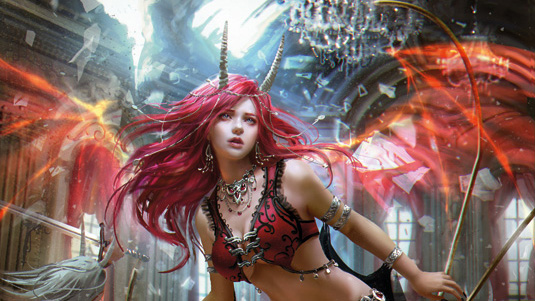
Even though I started dabbling in how to draw fantasy art as a teen, for a long fourth dimension I never idea of information technology as any more than a hobby. The first decisive step on the analogy path was putting my best pencils to one side and getting a Wacom tablet. Switching to digital eventually proved to be a game changer for me because it solved both the issue of speed and the loftier cost of art materials.
I attended an art school, only found that the emphasis was placed on contemporary trends, and then I had to acquire most of what I know about figurative painting on my ain.
However, a formal art education gave me a better perspective on technical matters and perchance created a framework for an efficient learning approach. So the tips in this workshop are an assorted collection of theoretical principles I picked up in school, personal observations and advices I constitute online.
I'grand currently illustrating cards for Applibot's Legend of the Cryptids, a fantasy game for smartphones, so I'1000 going to utilise images I created for the visitor to show how I apply this information in practice and, hopefully, provide some useful insight for those who are interested in producing like piece of work.
01. Deciding on the composition
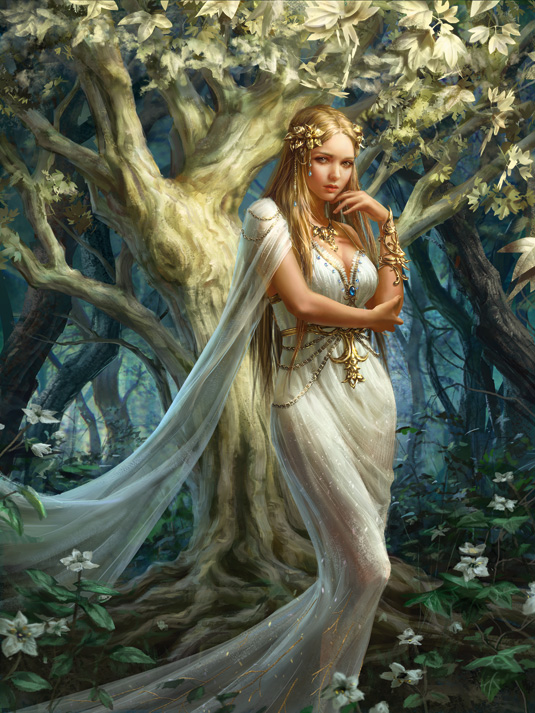
At that place are basically two types of composition: dynamic and static. The first is characterised by diagonal lines that add motility, while the second features strong verticals and horizontals that either assist to create a at-home temper if horizontals predominate or suggest harshness if the verticals are emphasised.
I adopt static compositions, but they can be a bit dull for fantasy themes. As a compromise, I use softer diagonal shapes as accents in the foreground. For case, placing objects such as flowing fabric hither and there helps to break upward the monotony and develops a pleasing contrast with the background.
02. When to employ symmetry
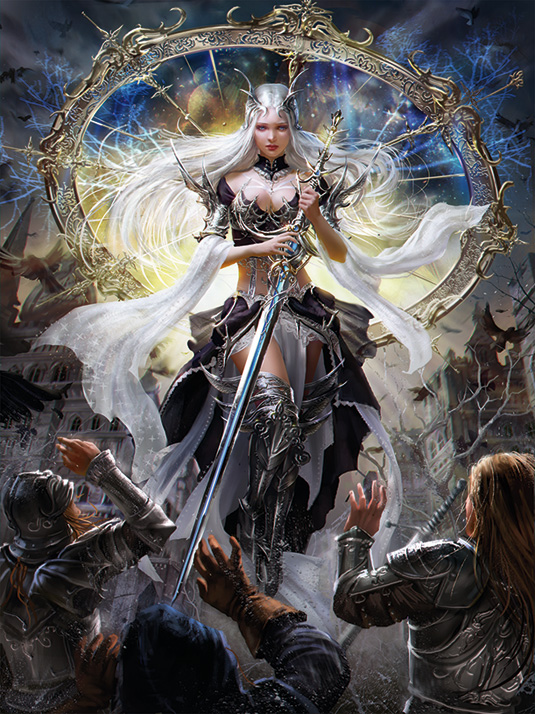
There'southward a time and a identify to use bilaterally symmetrical layouts. Indeed, I'd go so far every bit to say that this type of limerick should be used sparingly, but it'due south certainly constructive in appropriate contexts. Its visual impact is loftier because all lines converge and the centre is drawn towards the centre, so illustrated subject matter such as book covers or moving-picture show posters can benefit from information technology.
Symmetrical poses tin can make a character expect regal, powerful or heroic. They usually work especially well with characters who have wings and mythological beings in general, considering they remind the viewer of iconic representations.
03. Utilise the Southward-curve principle
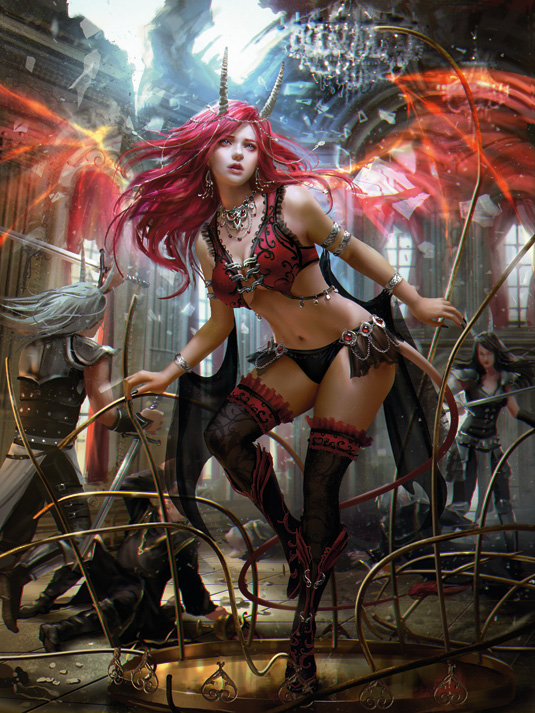
This goes dorsum to ancient Greek art and is considered ideal for depicting the homo figure. The body should be positioned in a way that describes an South-shaped line, then that the shoulders and the hips are angled differently. The most basic pose that uses this principle is contrapposto, where the figure rests all its weight on one leg.
In illustration, this formula can be taken fifty-fifty further, and curves and proportions can be exaggerated or stylised co-ordinate to your own painting method.
04. Develop focal points
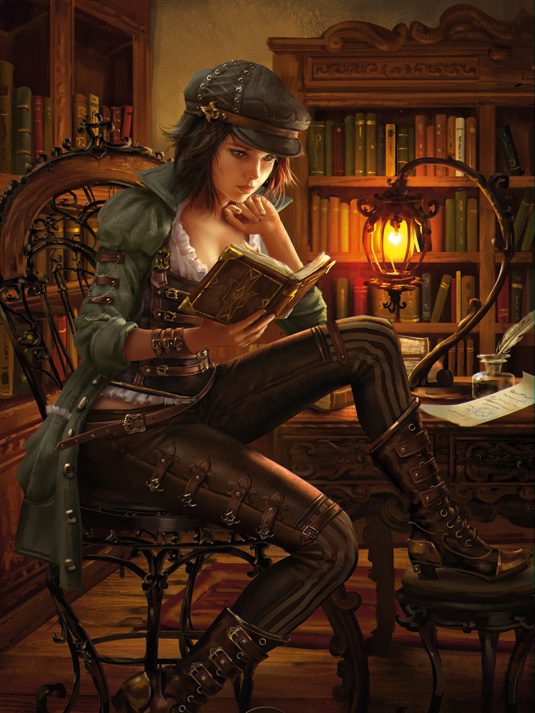
The first thing people notice in a picture are human being faces, so they become natural focal points and should, every bit such, exist placed advisedly. At that place are several ways to accentuate them or shift the involvement towards other areas of the image. One is manipulating lite, such as keeping most of the image relatively equally lit and have strong light hit the area nosotros want to stand out.
Variation in brush strokes or colours can besides exist used, rendering the focal indicate and keeping the remainder of the image rougher and more desaturated.
05. Dramatic light
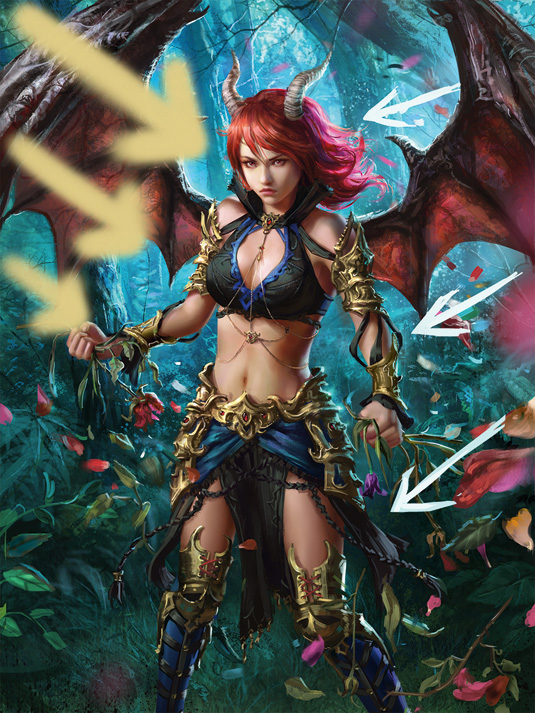
Interesting lightning tin can chop-chop give an epitome a fantasy look. One of the most commonly used – and my become-to lightning scheme – comprises a main softer low-cal and a harsher dorsum low-cal. This combination is even more than striking if the low-cal sources have complementary colours, merely this can soon become cheesy if overused!
Another of my favourite prepare-ups is a single lite source filtered through a window, placed at an angle that suggests the tardily afternoon sunlight.
06. Framing techniques
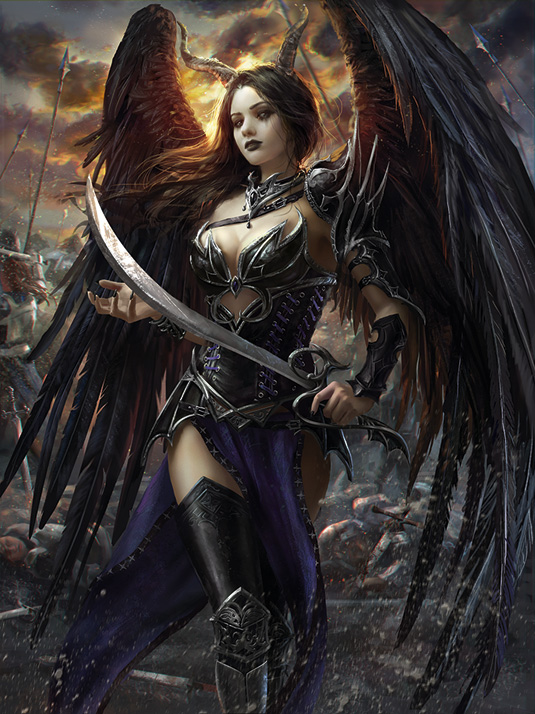
Depending on the purpose of an illustration, some limitations can come into play and one of them is framing. My bill of fare art is viewed on smartphones, so the characters demand to be large plenty to discern details and this means sometimes they won't fit into the frame.
In that location are a few rules of thumb on how to crop figures: don't cut where there are any joints, never cut through the hands (they should be either visible or out of the flick) and, for portraits, avoid cropping the ears or mentum.
07. Detail placement
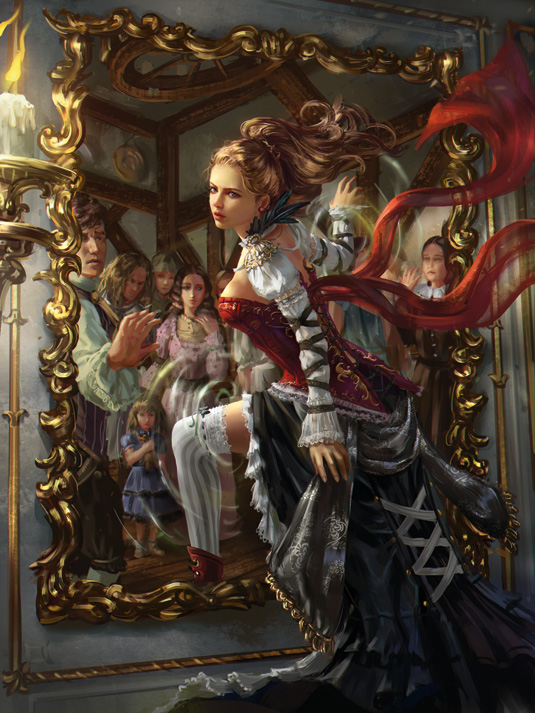
People organise visual elements in categories and group them into larger shapes, based on their proximity to each other. The Gestalt theory of visual perception has derived a series of rules from this premise.
An open area or a barely suggested object will be "autocompleted" past the viewer, as long as its shape is recognised equally a whole. This is why it's non necessary to smooth every particular or worry about perfect edges – just ensure that the chief shape is readable from a distance.
08. Make more of the background
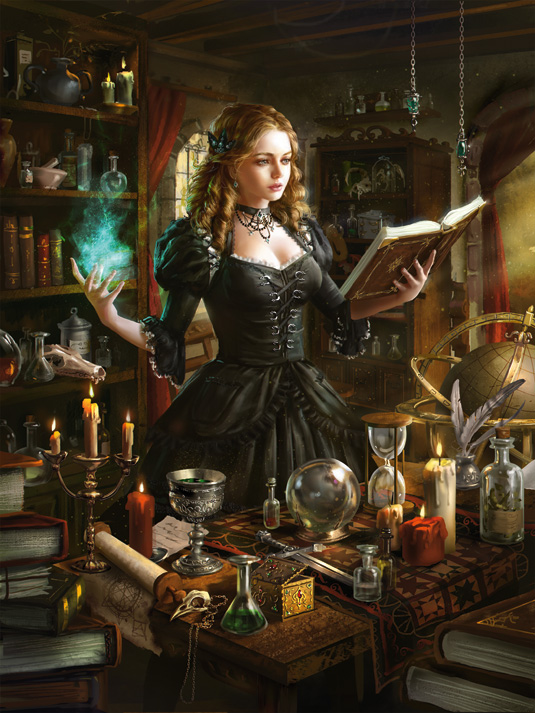
In game cards the focus is plainly on the grapheme, but backgrounds and other details add a whole new dimension. You tin hint at a graphic symbol's personality through their environment or describe their social status or occupation with various nearby objects.
A scholarly character could be surrounded by erstwhile tomes and scrolls, a warrior volition look more than menacing with a stormy heaven every bit a backdrop, and a graphic symbol could be recognised as a witch even without stereotypical costumes, only past decorating her place with alchemical paraphernalia and other mysterious-looking items.
09. Costume design
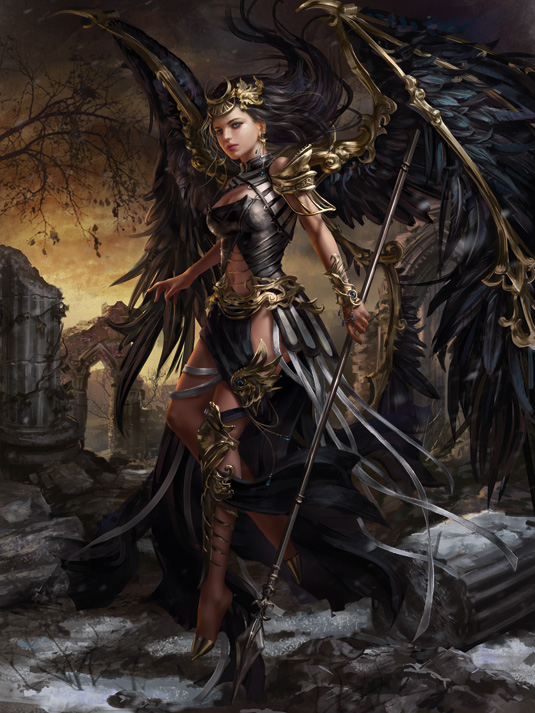
The greatest challenge I face when designing game cards is coming upward with fresh ideas for costumes, weapons and accessories. I follow diverse style, history and culture-related sites and blogs, and I save the most interesting clothing and armour designs in an inspiration folder.
I occasionally use Abracadabra, which generates unpredictable brushtrokes and random shapes, then I endeavor to find patterns in the resulted epitome. Costumes tin become quite detailed, and so to forbid them from looking too monotonous and "crowded", details should be grouped and placed merely in a few fundamental places.
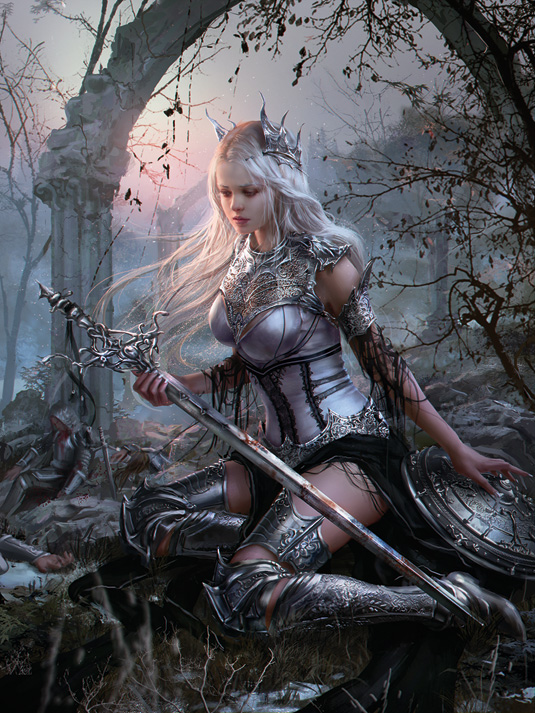
Fantasy art draws inspiration from historical sources, then ornate armour and weapons are commonplace. When dealing with metal objects, I often block in solid shapes and use the the Bevel and Emboss pick (Layer> Layer styles).
This is merely to create a quick base of operations to work with and shouldn't be used as a standalone technique (except perhaps for very minor details), because it'll produce an artificial-looking result. As a final affect, I add a few highlights using a textured castor that's prepare on Color Dodge mode.
11. Advice for painting pare
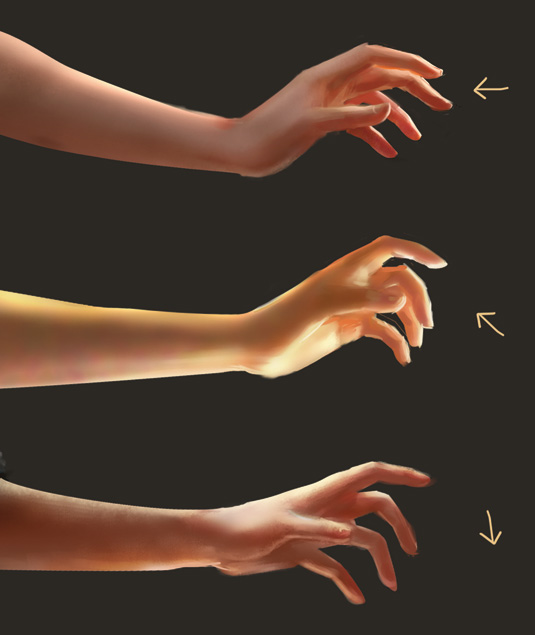
Subtle colour variation is crucial for illustrating realistic skin, but it tin too have a while to blend convincingly. To save time, I've reduced this principle to alternating betwixt the cold and warm hues that represent to value zones: if light is warm, then shaded portions are cold and darkest shadows warm again, and vice versa.
The transition line between calorie-free and shadow should be slightly more saturated. Pare is slightly translucent, and so vivid light will smooth through it, specially in areas with prominent basic and/or less muscles, such as the cheeks or fingers.
12. Color considerations
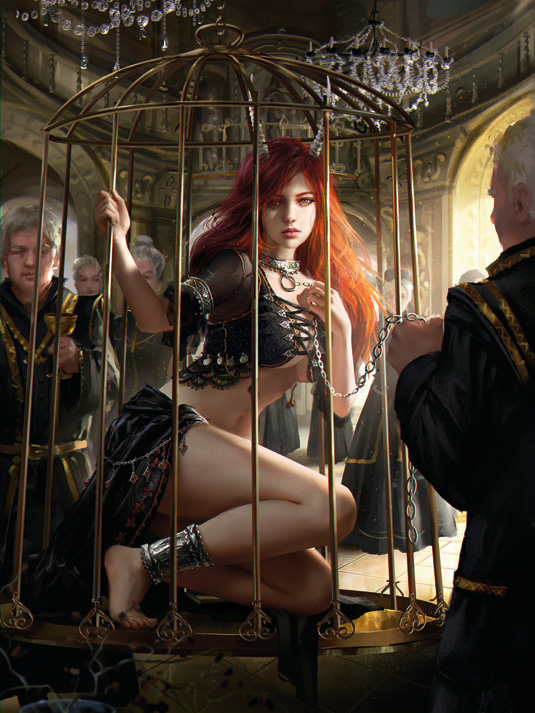
In theory, it seems unproblematic to pick a colour scheme according to the established art theory rules, only achieving realistic results involves more effort than that. Y'all accept to keep in mind that an object's colour isn't equally much adamant past the fashion it'southward pigmented, merely decided more past its surroundings: direct and reflect low-cal, weather, time of the twenty-four hours and so on.
On the other manus, values are fifty-fifty more of import; washed right and y'all can go away with less-than- perfect-hues. Complementaries are my customary colour scheme, with the warmer color as an emphasis.
xiii. Beyond fantasy
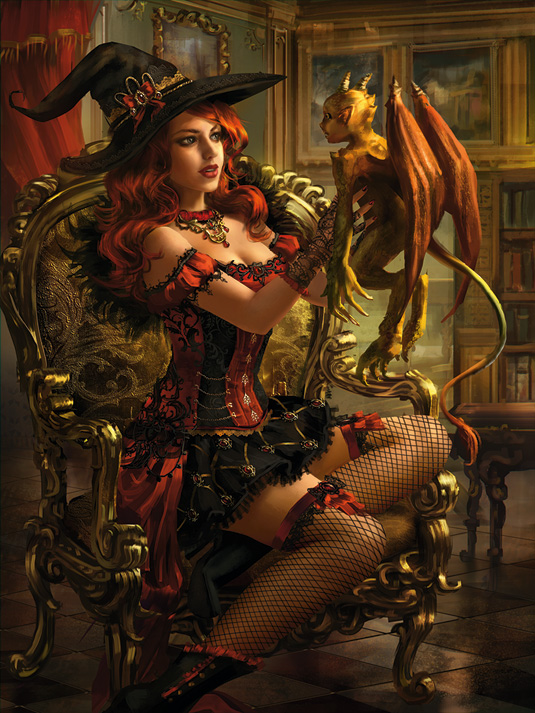
There'southward no need to limit your concepts at dogmatic sword & sorcery themes; ambivalent elements that work unexpectedly well together are definitely skilful for fantasy designs, whether the approach is serious or playful.
Besides the obvious cross-pollination between fantasy and sci-fi fine art, other types of imagery, ranging from Renaissance art to clean 3D looks can be incorporated into illustrations to varying degrees. Steampunk aesthetics are known to carry well in the mix and classical pin-up styles are a perfect manner to spice upwards a card character.
This article originally appeared in ImagineFX issue 131.
Related articles
Source: https://www.creativebloq.com/illustration/13-ways-improve-your-card-art-41619873
0 Response to "Boy Dribbling Basketball Clipart Clip Art Boy Pointing to Picture Cards"
Enregistrer un commentaire